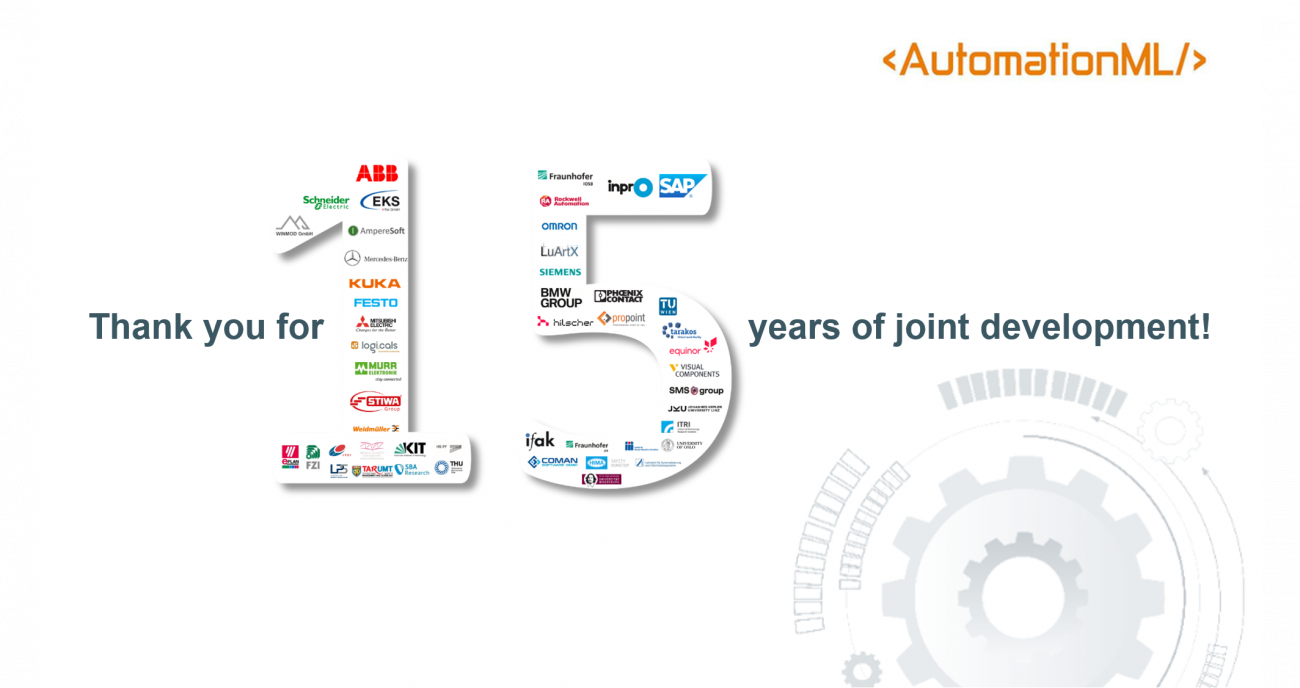
15 years ago, in April 2009, AutomationML association was founded and the standardisation of IEC 62714 series began.
The cornerstone for the later foundation of our association was laid in 2006, when Mercedes-Benz AG (formerly Daimler AG) invited leading manufacturers and users of automation technology to develop a data format for the seamless exchange of data between engineering tools. This initiative gave rise to the idea of AutomationML and later to found our association with numerous members from the industrial and the academic environment and in close alignment with various partner organisations, with the aim of determining the numerous requirements for such a data format, realising them technically and testing them in practice.
The first edition of AutomationML was published as an international IEC standard in 2012, followed by the second edition in 2018, which today comprises five parts in total. In addition, numerous publications were published in the form of application recommendations, best practice recommendations, white papers, as well as major book publications in 2010, 2021 and 2022. For usability and implementation support reasons, there is also software support such as the AutomationML Editor, the AutomationML Engine or the AutomationML Component Checker. This only roughly summarizes what has been achieved.
Thanks to the support of our members, their experts and the exchange with participating organisations, AutomationML has evolved over the years into what it is today – a flexible object-oriented data modelling language and a file format for storing and iteratively exchanging information between engineering tools that is based on XML, is application independent and offers comprehensive language elements for modelling object worlds of any kind, especially technical systems, including geometry, behaviour and a wide range of other documents giving rise for Asset Administration Shells of Industry 4.0.